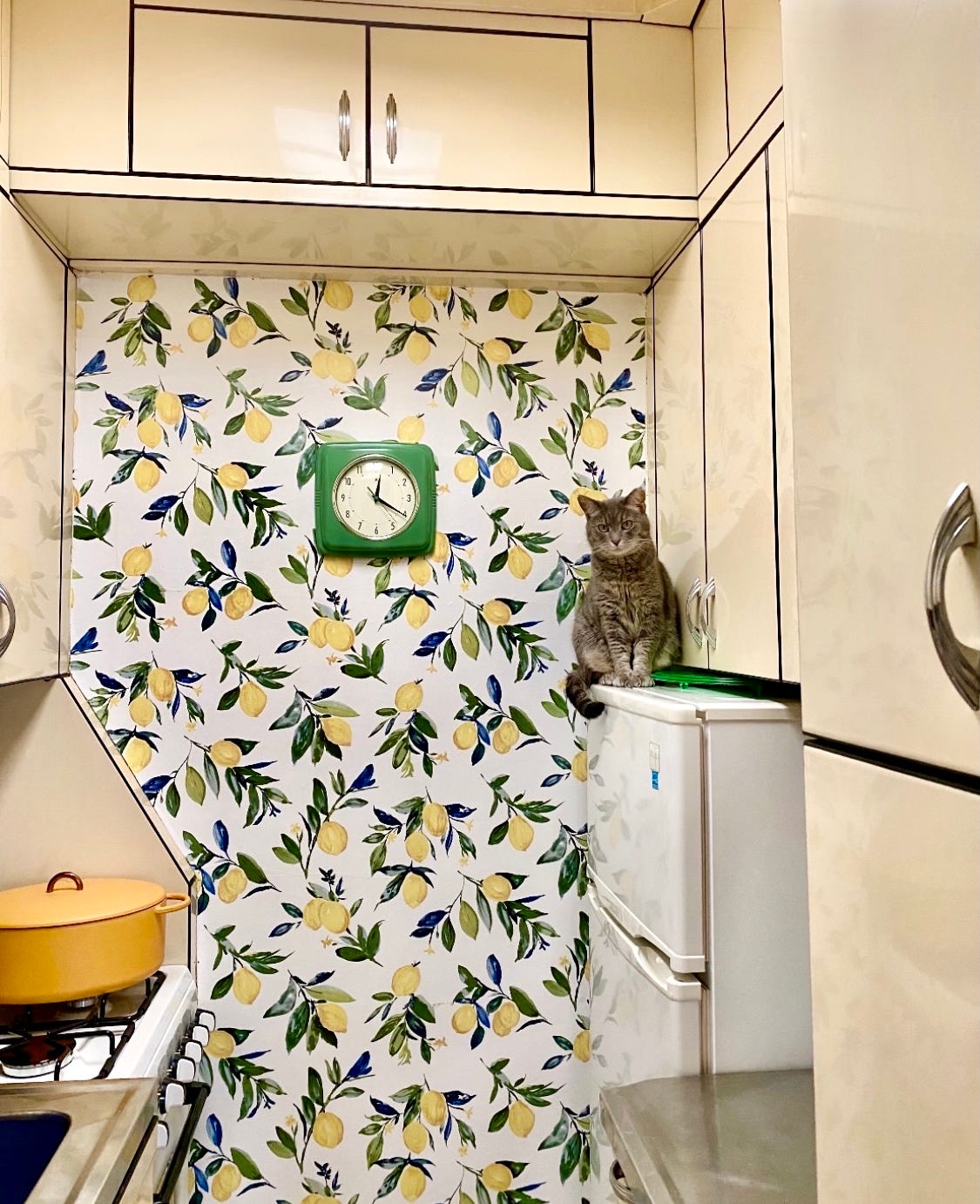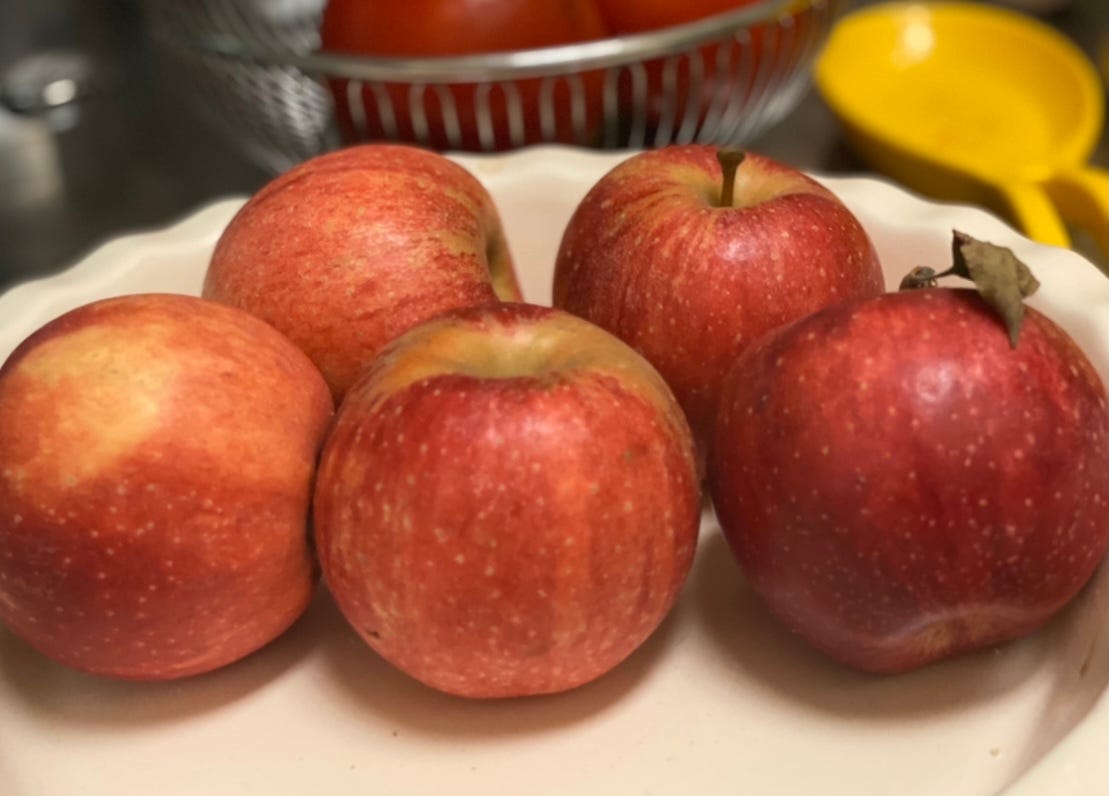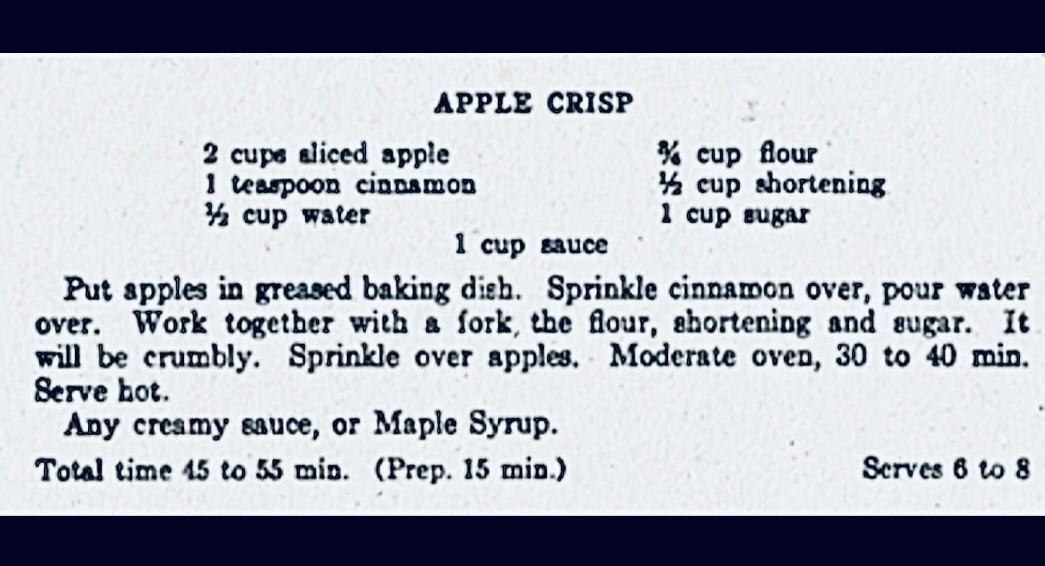One of the many things I like about baking is assembling the ingredients beforehand. I find everything about the process a balm, not a chore.
The kitchen radio is on and I’m in this 1920’s kitchen I love. The cat watches as I measure flour and unwrap cold butter, and the fragrance of cinnamon creates my own little aromatherapy shop.
Tillie eventually hops off her perch and watches as I clean the top of the fridge. She looks slightly insulted before she leaves for the other room, in search of a sun puddle.
These are the times I wonder most about the people who stood here during the 1920’s and 30’s. In this snug galley, I’m working on the same cutting board they did, opening the same cabinet doors. Did any of them have a cat who watched them bake?
It’s an infatuation that has me reaching back a century, connecting with them through recipes and food.
Today I’m making the first Apple Crisp recipe ever in print from the 1924 Everybody’s Cook Book by Isabel Ely Lord. She was born in Brooklyn and worked as a Librarian and Home Economist from 1904 to 1920 at Pratt Institute. She wrote cookbooks and helped Carl Sandburg research his biography of Lincoln. I loved discovering these New York and Illinois connections, my two ‘home’ states.
It’s always a kick to find an affordable treasure on eBay and this First Edition, with fountain pen inscriptions, fits the bill.
It’s all the sweeter that the address is ‘Comfort Street.’
The farmer’s markets are now shifting into Fall and last Saturday I picked up these beautiful Gala apples grown in Michigan. I like them because they’re crisp and sweet and don’t turn to mush as they bake. I used all five apples which gave me just a little bit more than the two cups the recipe calls for.
I didn’t peel them for a couple of reasons. The recipe doesn’t call for it and I was reading an apple crisp recipe by the great baker (and chocolate expert) Alice Medrich and she leaves the peels on in her recipe.
I made sure to wash the apples well and rather than slice them, cut them into chunks—the peels soften, but still give some nice texture and as Ms. Medrich writes, it’s more appetizing to have the squares than a longer strip with skin when eating.
She also mentions they give the crisp a lovely rosy hue, which they did. I served with unsweetened whipped cream and it was a hit.
The beauty of this recipe is in its simplicity and just how delicious it is:
Apples, Cinnamon, Butter, Flour, Sugar, Water. That’s it.
The flavor of the apples comes through so brightly, enhanced by the cinnamon and the crunchy, buttery sweetness of the topping is just right.
The only changes I made were:
-cut chunks vs. sliced apple
-I used butter (salted since there was no salt in the recipe) instead of shortening and compensated by added an additional 2 Tbsp. butter (which also helped with forming the topping and with browning)
-topped with whipped cream instead of maple syrup,
-baked at 375 F in a 10” round pie plate, but use a square pan if you like or a 9” round pan if that’s what you’ve got, you can’t really go wrong with this, when it’s bubbling and brown, you’ll know.
My apartment smelled so good as this baked — one of life’s simple pleasures, for sure.
I hope you’ll make it and enjoy it.
Have a great weekend!
All the best,
Jolene
Sources:
Everybody’s Cook Book, Isabel Ely Lord, Holt, 1924
Bea’s Apple Crisp, AliceMedrich.com
Pie Plate: Great Jones











Your 1927 American kitchen looks only slightly smaller than my 2001 Japanese kitchen but it probably has more storage space. I know that many American houses have huge kitchens, at least compared to Japan. Have people ever commented on the narrow space where you cook?
Great recipe, Jolene. 😘
Is it me, or is this lovely recipe begging to be messed around with? I’m sure it’s wonderful—and looks delicious!—but does it want a handful of oats or chopped nuts? Makes me want to riff.